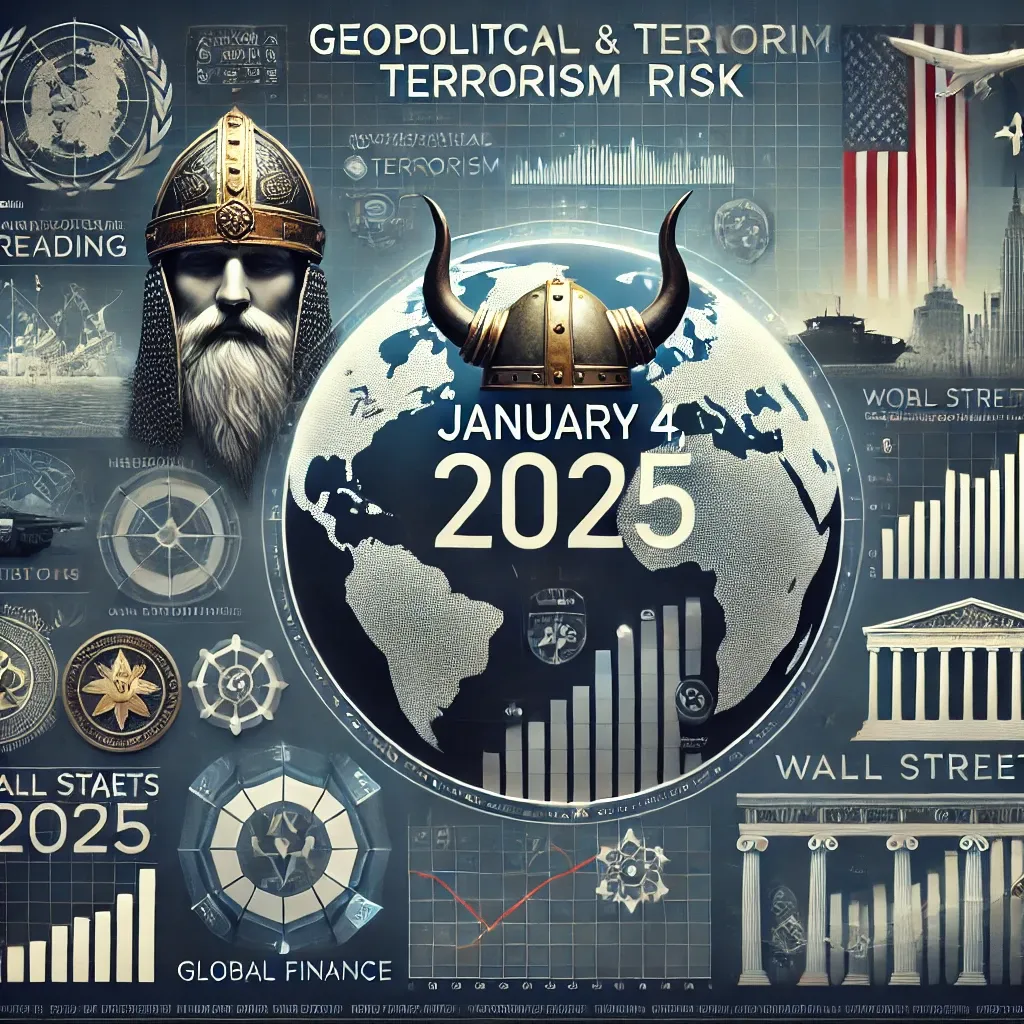Prime Rogue Daily Risk Report: January 4, 2025
Executive Summary
January 4, 2025, is marked by significant historical anniversaries and recent terrorist incidents that influence the current geopolitical and security landscape. The recent attacks in New Orleans and Las Vegas have heightened global security concerns, prompting calls for increased vigilance in public spaces. Additionally, historical events on this day, such as the Battle of Reading in 871 and the opening of the New York Stock Exchange’s first permanent headquarters in 1865, provide context for understanding contemporary security dynamics. Stakeholders are advised to enhance security measures, reassess risk management strategies, and stay informed about evolving threats.
1. Historical Significance and Symbolism
- Battle of Reading (871): On January 4, 871, the Viking Great Heathen Army defeated a Wessex force led by King Æthelred and his brother Alfred at Reading. This event is significant in the history of England’s resistance against Viking invasions and is remembered for its impact on the formation of the English nation.
- New York Stock Exchange Headquarters (1865): On this day in 1865, the New York Stock Exchange opened its first permanent headquarters at 10-12 Broad Street, near Wall Street in New York City. This milestone represents a foundational moment in the history of global finance and economic development.
2. Recent Events Shaping Risks
- New Orleans Terror Attack (January 1, 2025): A lone assailant, Shamsud-Din Jabbar, a U.S. Army veteran, carried out an attack on Bourbon Street, resulting in 14 deaths and numerous injuries. Jabbar, who claimed affiliation with the Islamic State, attempted to detonate improvised explosive devices, highlighting the persistent threat of domestic terrorism inspired by extremist ideologies.
- Las Vegas Vehicle Attack (January 2, 2025): A terrorist incident involving a Tesla Cybertruck in Las Vegas has underscored the resurgence of terrorism in the U.S., raising concerns about the use of vehicles in attacks on crowded public spaces.
3. Predictive Analysis
Potential Targets:
- Public Gatherings and Events:
- High-profile locations and events in major cities, especially those with large crowds, are at increased risk of attacks.
- Critical Infrastructure:
- Transportation hubs, energy facilities, and public venues may be targeted to cause widespread disruption and fear.
- Symbolic Landmarks:
- Monuments and sites of cultural or political significance could be potential targets for extremist groups seeking to make a statement.
Likely Attack Types:
- Improvised Explosive Devices (IEDs):
- The use of homemade bombs in public spaces remains a prevalent tactic among terrorists aiming to inflict mass casualties.
- Vehicle Ramming Attacks:
- The recent Las Vegas incident highlights the continued use of vehicles as weapons against pedestrians in crowded areas.
- Lone-Actor Assaults:
- Individuals inspired by extremist ideologies may conduct solo attacks, making detection and prevention challenging.
High-Risk Regions:
- United States:
- Recent attacks indicate a heightened threat level, necessitating increased security measures nationwide.
- Europe:
- Given historical patterns, European cities remain vigilant against potential terrorist activities, especially in public spaces.
- Middle East:
- Ongoing conflicts and instability continue to foster environments where extremist groups can plan and execute attacks.
4. Implications for Stakeholders
- Businesses:
- Enhance security protocols, particularly in locations with high public footfall.
- Reassess risk management strategies to account for the evolving geopolitical landscape and potential supply chain disruptions.
- Government Agencies:
- Increase surveillance and intelligence-sharing to detect and prevent potential attacks.
- Implement public awareness campaigns to educate citizens on recognizing and reporting suspicious activities.
- General Public:
- Maintain heightened vigilance in crowded areas and during public events.
- Stay informed through official channels and promptly report any suspicious behavior to authorities.
Conclusion
The events of January 4, 2025, underscore the persistent and evolving nature of terrorism and geopolitical risks. Recent attacks in the United States highlight the need for continued vigilance and proactive measures to safeguard public spaces and critical infrastructure. Businesses and government agencies must adapt to the shifting threat landscape, ensuring that security protocols and risk management strategies are robust and responsive to emerging challenges.
This report is part of Prime Rogue’s commitment to providing timely and insightful analysis on terrorism and geopolitical risks.
